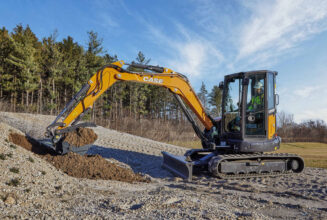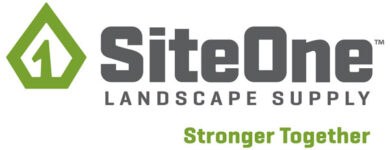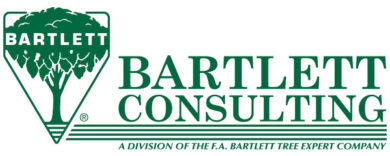Greening Cities One Roof at a Time
By Don Eberly
Rooftop gardens are an impressive union of artful design and technical science with a combined and dual-fold effect. In simple terms, green roofs serve as sustainable structures for those who own them, and provide financial profit for the professionals who design and construct them.
However, it is with no small amount of learning and education that contractors become experts in the field. Companies and practitioners focusing on the industry – including design/build firms, architects, landscape contractors, horticulturists, and related product- and service-providers – have devoted years of research and development to perfecting green roofs to the high-tech position they hold in the marketplace, and around the globe.
Sizing up systems
The premise behind green roofs is intrinsic. In short, it can be thought of in a three-tier approach starting with the design and construction of a sturdy rooftop structure able to hold and maintain a variety of compositions. This is followed by aggregate media produced and well-suited for the many needs of the roof itself, as well as the live goods that ultimately make the project green. Then there are the plants, carefully chosen and specifically grown and planned for the involved extreme environments. Installation of an effective watering system, initial weight bearing considerations, and the prevention of leaks are also significant concerns for those taking on the challenge of planting rooftops.
Architects, contractors, horticulturists, landscape/urban developers, ecologists, and others work with intensive, extensive or semi-intensive green roof systems. The chosen system begins the overall process and serves as the foundation for most considerations during the construction and life of the structure. Intensive systems are characterized by their multi-faceted accommodation for wide diversification of vegetation including herbaceous perennials, shrubs, trees, and turf. The use of substrate at least 6 inches deep is common, and these spaces tend to house irrigation, layered tiers, protective liners or fabric, and can have water features. Extensive systems are created with fewer technical aspects, lesser cost, small-stature plants, and the intension of minimal maintenance. With between 1 and 6 inches substrate depth, they are lighter and minimize load strengthening. Semi-intensive roofs, also known as semi-extensive or hybrid systems, share attributes of both extensive and intensive roofs. They are known for the combination of various features affiliated with the aforesaid singular types and the use of lightweight substrates at approximately 4 to 8 inches deep.
Considering construction
Green roof construction has evolved into a complex docket of options. There are many emerging patented products and related services, allowing for innovative edifices. However, almost all green roofs are based upon an inherent two-layer concept including distinctive vegetation and suitable media mix or substrate. These layers act in accordance with some form of devise or apparatus to protect the roof from damage.
The building on which the green or garden roof formation will sit is the key element to determining structural integrity. It is recommended to first seek the advice of a licensed structural engineer, with the goal of exploring the building’s load-bearing capacity. This is particularly necessary when retro-fitting existing roofs.
Since extensive green roofs are typically lighter weight, they are viable for many buildings constructed in fairly recent times. Intensive roofs, given their heightened level of technology and substance, come with prerequisites.
Building codes will also dictate the system type, weight allowance, usable size, and required cantilevers or fortifications. If there is one all-important factor to keep in mind, it might very well be that of water. Some wet green roof materials can tip the scales at more than double their tactile weights when dry.
Mastering the media mixes
Growing media or aggregate substrates on green roofs are sometimes overlooked as a subsidiary effect of a new project. However, the substrate must perform the incredible job of retaining water and nutrients in support of the plants, while having permanent aeration qualities even after years of consolidation. Produced substrates for green roofs are often considered superior to natural soils in that they are prescription-based alternatives developed for the specific design and nutrient needs of rooftop gardens.
According to Big River Industries, an Oldcastle APG company, it is vital to use a blended medium to reduce the density of the soil mix. This decreases roof loads imposed by green roof structures.
“We supply green roof contractors and others in the industry with a rotary kiln-produced and lightweight aggregate called HydRocks that is blended with ingredients such as sand and compost,” said Jeff Speck, vice-president of sales/marketing. “The product is a ceramic aggregate fired in a process that causes the clay to expand, producing millions of tiny, disconnected pores that absorb water and nutrients.” During dry periods, the stored water and nutrients are released to the plants’ root systems to sustain growth.
Lightweight soil enhancers have many advantages for green roofs such as reducing the heat island effect, decreasing energy costs, providing noise abatement, and supplying storm water detention. In keeping with green roof standards, some aggregates like HydRocks are all-natural, eco-friendly and non-degradable. Ultimately, utilizing such aggregates that are agriculturally sterile and environmentally inert is a means of customizing the media to suit the vegetation and roof system.
Plant for perfection
Without plant material, a green roof would be neither green nor environmentally satisfying. Today’s green roofs are an attempt to reverse or counterbalance the effects of urbanization. Besides contributing aesthetics, plants on roofs mitigate pollution, consume heat dispersed by cities and towns, and regulate heating and cooling energy usage. Since the environments of rooftops are harsh and climatically challenging, plant selection should be thought of in terms of the worst possible conditions — from excessive heat and drought to exaggerated cold and wind. Then, too, there is the need for beauty, year-round interest, and variance.
Installing plants for appropriate growth on rooftops involves various methods, notwithstanding two popular techniques. These include applying seed or cuttings to the substrate and planting plug- or pot-grown plants. Since plants grown in pots may have root balls too large for the substrate depth, plugs grown in trays are fast-becoming a green roof preference. According to Northwest Horticulture, a company specializing in plants for roofs, plugs tend to have vast root systems, acting with competent growth when planted evenly throughout a space.
“Northwest Horticulture grows 24-, 72-, 128-, and 200-cell plugs,” said Dick Gigot, director of sales/marketing. “By far, the greatest demand is for the 72-cell size, which reflects a compromise of cost and viability in most situations.”
Sowing seed on garden roofs saves some costs upfront, but the longer time for plant growth is often displeasing to green roof clients. On the flipside, cuttings are used to maximize faster coverage. Sedum cuttings, with their robust propensity, are thought by many to be the most cost-effective way to establish a green roof. “This method works best in spring or early fall when there is a tendency for rain and cooler temperatures,” said Gigot. “This reduces the need for watering while the cuttings develop a good root system.” For sedum cuttings, Gigot recommends providing a contact between the cuttings and media. “This can be done by putting a thin mulch layer over the cuttings after planting, and watering them well,” he said.
One of the best mulching methods includes a layer of hydro-mulch or a thin erosion-control blanket designed for vegetative establishment.
The lowdown on leaks
Waterproofing a green roof is a requirement for all systems, types and locations. Waterproof membranes are available in different forms. Rubberized and plastic materials are common; however, the range includes everything from sprayed protectants to asphalt substances.
Positive drainage must be present and can be accomplished with drainage units or layers being laid over the membrane. The pitch of the roof and drainage mechanism must be taken into account so a predetermined amount of drainage takes place. Too much or little water drainage could lead to problems either for the plants or structure.
Testing the membrane at the onset and, if needed, during the life of the green roof is suggested.
“Initial testing can pinpoint accurate integrity prior to a green roof being installed,” said Alicia Hexham, BA/project manager at International Leak Detection, creator of Electric Field Vector Mapping (EFVM) used to test and troubleshoot waterproofing and roofing membranes.
If leaks go unnoticed, mold issues, roofing system deterioration, and structural decay are not only possible, but likely. This is so critical, architects spec leak detection programs such as EFVM into their overall plans.
All green roofs are better off with a formalized and scheduled plan of maintenance. Proactive inspections by owners and trade professionals can help protect green roofs as well as the buildings and frameworks upon which they are attached.
Don Eberly is president of Eberly & Collard Public Relations, which specializes in the home, garden, design, agribusiness and landscape industries. He can be reached via e-mail at deberly@eberlycollardpr.com.



